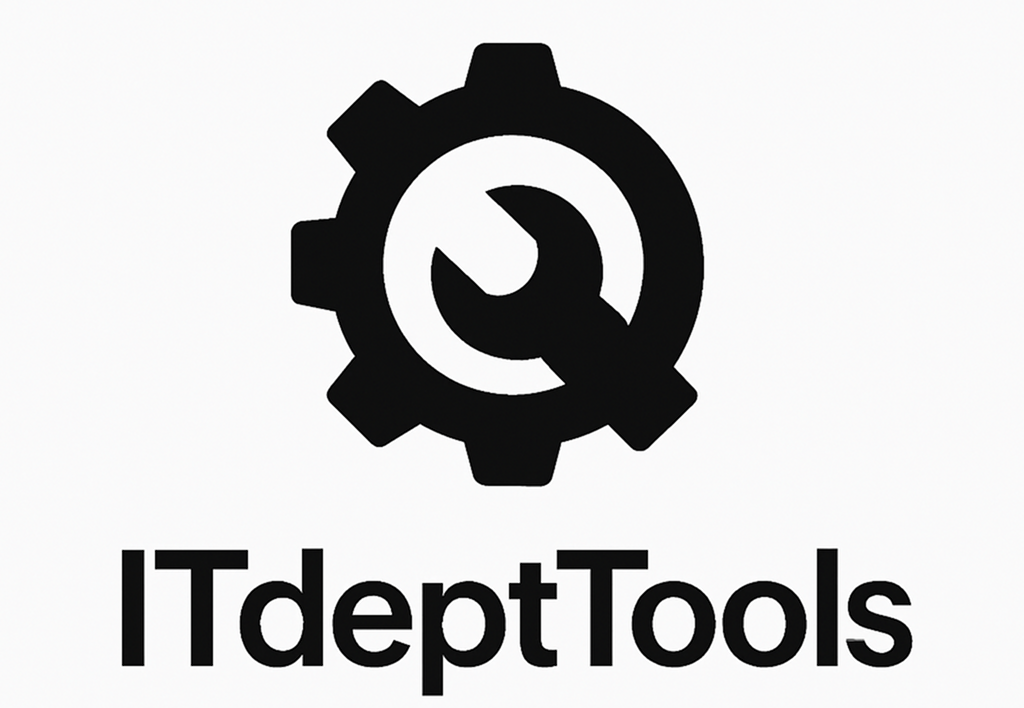ITDeptTools
Essential Software for IT Departments
Trusted solutions to manage infrastructure, automate tasks, and safeguard your corporate network
Updates for IT Professionals

- News
Let’s be honest — for a long time, AMD wasn’t the first name that came up in conversations about AI hardware. Powerful? Sure. Affordable? Often. But in the high-stakes race for training massive models and deploying them at scale? NVIDIA had the stage.
That’s why this week’s reveal hit differently.
AMD isn’t just talking about faster chips anymore. With the announcement of the Instinct MI350 and their CDNA 4 architecture, they’re stepping into a space that’s been pretty one-sided until now — and doing it with something to prove.
According to AMD, the MI350 is expected to offer a 35x jump in inference throughput over their earlier MI250 cards. That’s a bold number, even in a world full of bold benchmarks. But it’s not just the raw speed bump that caught attention — it’s the direction.
This Time, It’s Not Just About Chips
What’s different? For starters, AMD’s messaging has shifted. Instead of dropping a single component and calling it a day, they’re rolling out a rack-scale platform — the whole kit: CPUs, GPUs, memory, networking, orchestration. All integrated, all built to work together from the jump.
It’s a very deliberate move. One that says, “We’re not just here to sell silicon — we’re here to support actual infrastructure.”
They’re going after hyperscale setups, yes — but also AI labs, enterprise data centers, and research orgs that have been dealing with GPU shortages, backorders, and platform fragmentation for the past couple of years.
ROCm, Finally Growing Up?
One of the more interesting subplots here is the software stack. Let’s be real — this used to be AMD’s weak spot. ROCm always had potential, but adoption lagged and optimization was… let’s say uneven.
Now, with more stable PyTorch integration, growing support from Microsoft, Oracle, and other big players, and a clear effort to clean up the dev experience — ROCm is starting to look less like an afterthought and more like a core part of the strategy.
It’s clear AMD knows: without software that plays nice, even the fastest hardware struggles to matter.
Should You Care?
Short answer? Probably.
If you’re in enterprise infrastructure, AI R&D, or managing any compute-heavy workloads, it never hurts to have another serious option on the table. And if AMD delivers what they’re promising with MI350 — especially at a price-to-performance ratio that undercuts NVIDIA — then a lot of procurement strategies are about to change.
Even just having credible competition can shift the market — soften lead times, rebalance pricing, and push both vendors to move faster.
AMD isn’t there yet. But this time, they’re not just chasing.
They’re building something that might force everyone else to pay attention.

- News
Over the past few years, edge computing has quietly moved from theory to frontline reality. It’s in factories, ports, trucks, remote retail branches, city infrastructure — often in places without stable power, climate control, or even a human nearby. And while early proof-of-concept demos looked clean and promising, scaling secure, intelligent infrastructure at the edge has been a far messier story.
Here’s what we’ve actually learned by doing it.
Lesson One: The Edge Isn’t Just “Cloud, but Smaller”
This has been the biggest trap. Too many teams assumed they could treat edge deployments like mini data centers — rack a server, install some agents, sync back to the cloud. But out there in the field, edge nodes are ruggedized boxes under a shelf in a freezer, or sensors mounted to poles, or AI cameras hanging off a wall in a parking garage.
Power goes out. Networks drop. Latency spikes. And yet the system needs to keep running — making decisions, caching data, reacting in real time.
That means edge infrastructure needs to be fundamentally self-sufficient, resilient to failure, and tightly integrated with the physical world it lives in.
Lesson Two: Scaling Breaks Everything
It’s one thing to manage a dozen test devices in a lab. It’s another to manage 3,000 edge endpoints across a continent. You can’t SSH into each box. You can’t rely on centralized cloud control if half your fleet goes offline during a snowstorm.
What works at scale? Lightweight orchestration (K3s, container-based apps), GitOps-style deployments, and automated provisioning that assumes zero-touch. Systems need to be smart enough to heal themselves, update safely over flaky links, and cache logic locally in case the uplink vanishes for hours.
More and more edge teams are adopting event-driven models — processing data at the source and only sending summaries to the cloud. That shift alone redefines how we design APIs, storage, and monitoring.
Lesson Three: Security Isn’t a Checkbox
Edge infrastructure lives outside the perimeter. Physically. Logically. Operationally. That changes the entire approach to security.
You’re dealing with:
– devices that may be unsupervised for months,
– firmware that’s hard to patch,
– physical ports that anyone could plug into,
– and critical data being processed right on the device.
The best teams now bake in identity at the hardware level (TPM, attestation), use encrypted boot chains, and build systems that don’t trust anything unless it proves itself — every time.
There’s no “install firewall and forget” here. This is security for harsh, dynamic, and unpredictable environments.
What’s the Takeaway?
Edge infrastructure isn’t a spin-off of cloud computing — it’s its own category. It demands its own architecture, its own assumptions, and its own battle-tested stack. If your edge deployment works fine in the lab but falls apart in the wild, you’re not alone. That’s what scaling exposes.
And the companies who’ve pushed past those growing pains — in logistics, transit, energy, and smart cities — are the ones treating edge as a first-class domain, not just a bolt-on extension.
They’re not trying to force cloud-native thinking onto hardware bolted under a bridge.
They’re building for reality.

- News
Let’s face it: relying on a single cloud provider in today’s world feels… risky. Outages happen. Costs spike. Regions go down without warning. That’s why more and more enterprise teams are leaning into multi-cloud setups. But here’s the catch — stitching together networks across different clouds isn’t as simple as firing up a few VPN tunnels and calling it a day.
This is where multi-cloud networking (MCN) earns its keep — by turning scattered infrastructure into something resilient, secure, and manageable.
When One Cloud Isn’t Enough
Imagine your main app runs on AWS, but your analytics workloads are housed in GCP. Maybe you’ve got backups and compliance workloads in Azure. Now imagine something breaks — a DNS failure, a peering issue, a regional outage. Without multi-cloud connectivity, failover isn’t just slow — it’s often impossible.
Multi-cloud networking gives you options. With the right setup, traffic can reroute in real-time. Critical services stay online. Users barely notice. And your team? They sleep a little easier.
Sounds Great — But How Does It Actually Work?
– Redundant routing across clouds: Engineers use BGP or dynamic overlays to keep routes alive and adaptive. This isn’t theory — many large orgs already run cross-cloud routing that automatically detects and bypasses failures.
– Consistent network policies: Instead of managing ACLs separately in AWS, Azure, GCP, etc., MCN platforms let you apply security rules globally. Think of it as zero-trust, but cloud-aware.
– Centralized observability: You’ll want a unified view of your metrics and flows. Tools like VictoriaMetrics (as a back end for Prometheus) let you pull in data from all clouds without breaking the bank or your RAM limits.
– Overlay networks that just work: VPNs are fine, but overlay solutions like WireGuard mesh, service mesh extensions (e.g., Istio multi-mesh), or commercial MCN platforms (Aviatrix, Alkira, etc.) offer more control and visibility.
But It’s Not Plug-and-Play
No one said multi-cloud was easy. You’ll have to deal with:
– Latency quirks between regions
– Non-uniform MTU sizes
– Differences in naming, tagging, and identity models
– Surprisingly high egress costs
– Monitoring and alerting across trust boundaries
Still, with careful planning — and the right tooling — it’s absolutely doable. And the upside is huge: resiliency, vendor independence, traffic optimization, and better alignment with business continuity goals.
Final Thought
Multi-cloud networking isn’t something you “bolt on” when things go wrong. It’s something you build deliberately — so that when things do go wrong, they don’t take you down with them.
If you’re managing corporate infrastructure in 2025, this is the network layer you want to get right.

- News
The job market for network pros is picking up again. That’s the good news.
But before you dust off your resume and start listing every router you’ve ever touched — take a breath. Things have changed.
A few years ago, knowing your way around OSPF, stacking switches, maybe a CCNP — that could get you through the door. Now? It’s a little more… layered. Employers aren’t just looking for config monkeys anymore. They’re hunting for people who can actually connect dots — between infrastructure, cloud, automation, and security.
And that shift? It’s reshaping how hiring works across the board.
What Hiring Teams Are Really After
First thing: cloud. If you’ve touched AWS or Azure networking — even better if you’ve fought with a VPC route table and lived to tell the tale — you’re already standing out. It’s not about being a full-blown cloud architect. It’s about being able to work in hybrid territory without panicking.
Then comes automation. Python, Ansible, maybe Terraform — these aren’t “cool extras” anymore. Teams are leaner, deadlines tighter, and no one wants to watch you configure interfaces one by one.
Security? It’s everywhere. Especially zero trust — not just as a buzzword, but as a design pattern. If you understand segmentation, policy-based access, and identity-driven flows, you’re what they’d call “future-proof.”
And Certifications? Mixed Bag.
Yes, certs still help. CCNA, CCNP — they show you’ve got fundamentals. But a growing number of employers are just as curious about what you’ve *built* — lab setups, GitHub repos, maybe that half-broken Kubernetes cluster you wrestled into shape on a spare laptop.
Bonus points if you’ve got hands-on experience with cloud certs like:
– AWS Advanced Networking
– Azure Network Engineer
– CKA (if you’ve dealt with overlay networks)
– Terraform Associate
But again — no one’s hiring paper certs. They’re hiring engineers who can solve real-world stuff and adapt when the tools change. Because they *will* change.
Final Thought?
If you’re on the hiring side, stop looking for people who memorized command syntax. Look for the ones who troubleshoot weird issues in cloud forums at 2 a.m. and write scripts not because they love YAML — but because they hate repeating themselves.
And if you’re on the job-hunting side — focus on relevance. The industry isn’t asking you to be perfect. But it *is* asking you to stay current, be curious, and know why your network matters beyond just keeping the lights on.
Networking used to be about ports and cables. Now? It’s about context.
Tools for System Administrators
Software

Run multiple environments on a single machine. These tools help isolate workloads, improve scalability, and streamline development with VMs and containers.

Protect your systems from cyber threats. This category includes tools for intrusion detection, hardening, malware defense, and secure configurations.



Track system metrics, collect logs, and get alerted to anomalies. Essential for maintaining stability, visibility, and fast incident response.

Simplify remote access and file operations. This set includes secure tools for SSH, SFTP, and efficient local or server-side file management.

Automate data protection with reliable backup and recovery tools. Designed to prevent data loss across desktops, servers, and cloud platforms.
